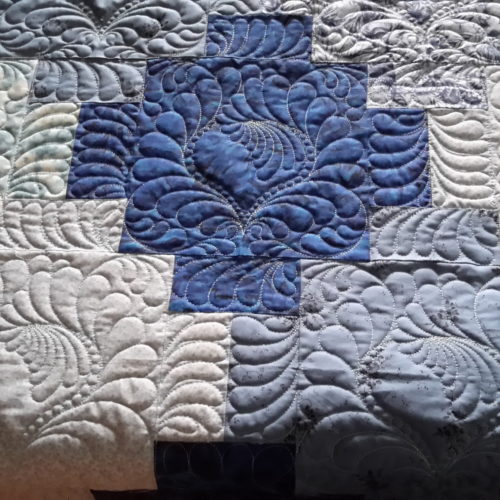A few simple steps will help ensure your quilt is ready for the long-arm machine without any time consuming and costly preparation prior to loading on the machine.
Backing fabric and batting should be at least 4 inches larger than your quilt top – on each side. This is to allow adequate room for rolling the fabric onto the machine frame.
Wide-back fabric (105″ or wider) is preferable for large quilts, however, if you choose to use a narrower fabric you should ensure that the seam lines run across the width of the quilt, not the length of the quilt. When piecing your backing fabric you should use a 1″ seam and ensure the selvedge is removed. It is up to you if you would like to have the seams pressed open or not.
The backing, batting and quilt top should remain separate. The backing and top should be pressed and flat folded.
Make your quilt fit your borders, instead of your borders fitting the quilt. To do this, measure through the center of your quilt, and both ends. Average the measurements and cut your borders that length. Then mark both the border strip and the quilt edge in eighths (for smaller quilts, measure in fourths). Match the marks and ease the quilt into the borders. This helps ensure that the border lays flat without dog-ears or “waving flags”.
If your quilt top has a pieced border you should stabilize it, either by top stitching 1/8 to 1/4″ from the edge or if you have a serger, stabilizing the border with a serged seam is also a good method. This will help your quilt top to remain square. This is especially important if your border has been pieced with bias edges. A quarter inch or smaller serger seam will ensure it is hidden in the binding.
